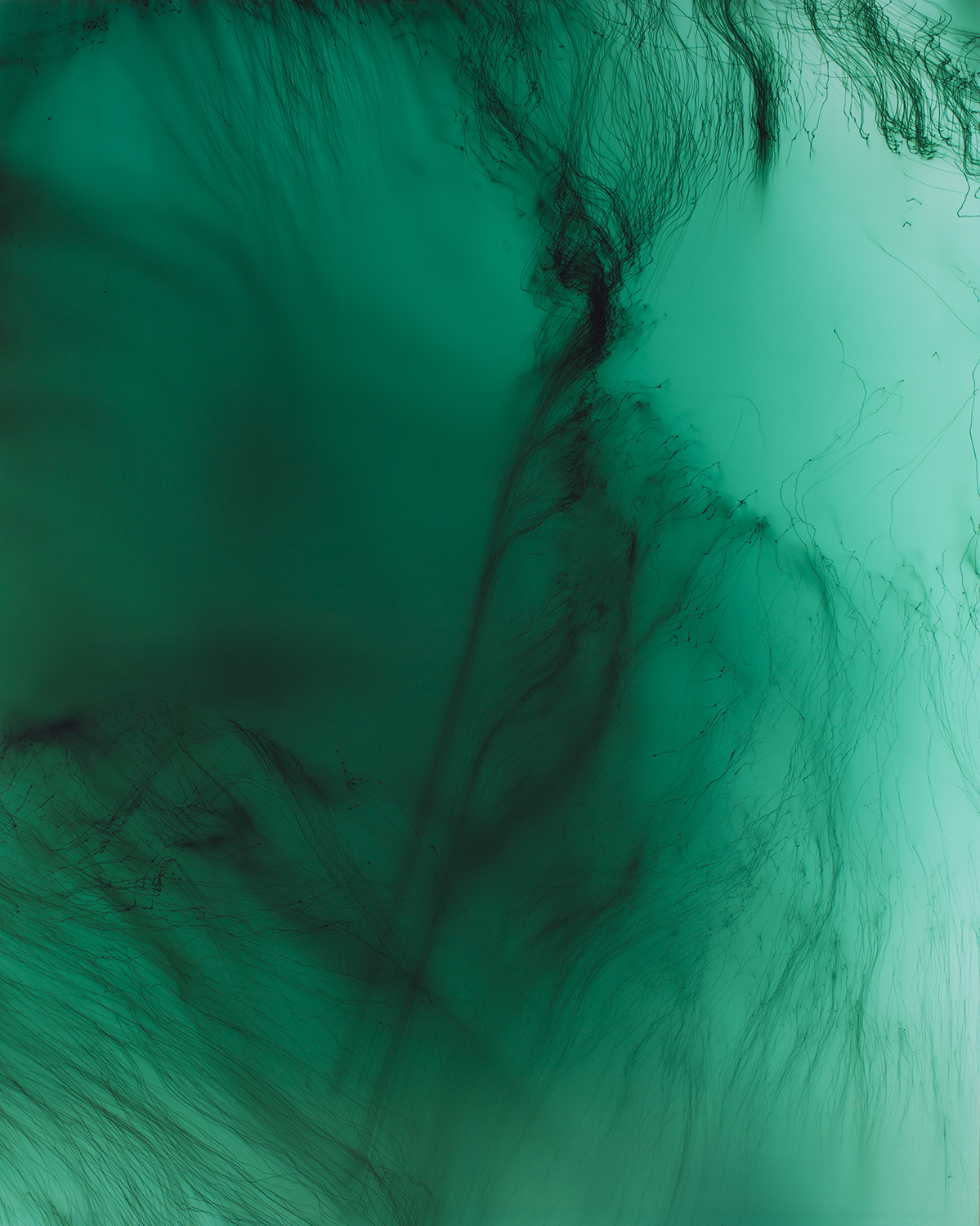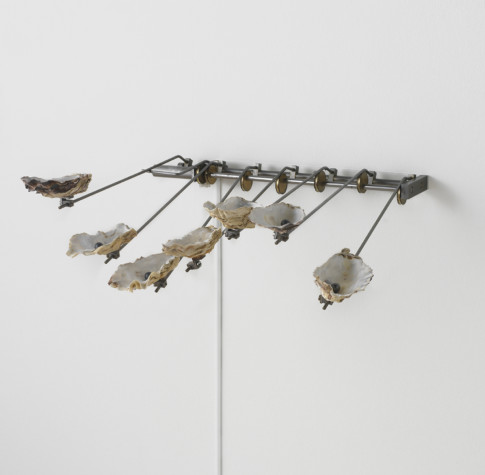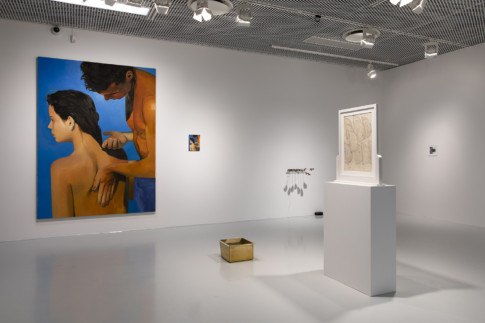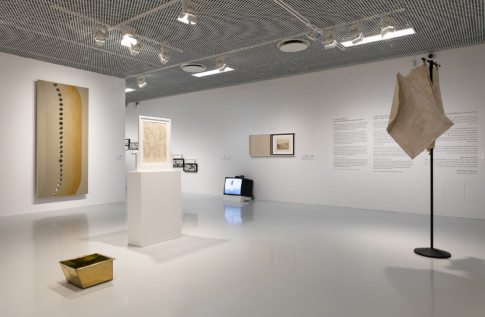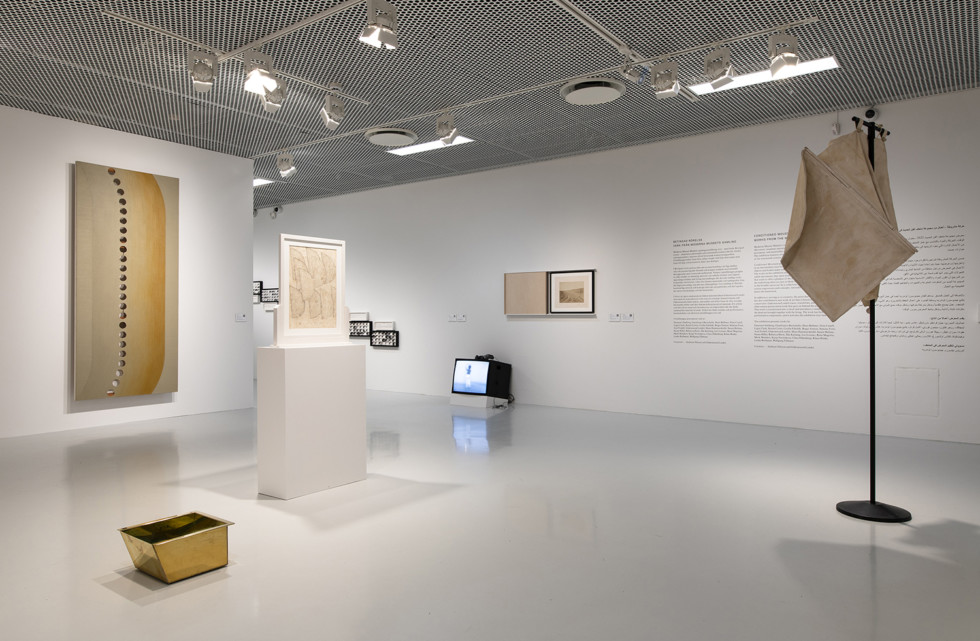
Installation view, Conditioned Movement., 2022 Photo: Helene Toresdotter/Moderna Museet
About the works in Conditioned Movement
Emanuel Almborg
Talking Hands, 2016
Emanuel Almborg investigates historical and new educational methods that develop mindfulness and learning on children’s terms. The video work Talking Hands (2016) is about the radical Zagorsk school for deaf-blind pupils outside Moscow where the students learn a kind of hand language that takes them out of their isolation. The school was established by the philosopher Evald Ilyenkov in the 1960s, at odds with the prevailing state ideology. A former student is interviewed about the school’s history. The sensitive editing ties the artist’s intensely listening eyes together with the man’s talking hand movements and the school’s archival images of children exploring their surroundings using the sensitivity of their skin.
Please note, the work is on view on the Loading Dock 6.12 2022 – 15.1 2023
Gianfranco Baruchello
NO TITLE, before 1975
Gianfranco Baruchello’s art is a perpetual activity, and is more about the artist’s lifetime project than the individual works of art. The resulting creations can be traces of the past, drawings or maps for whatever project he’s working on. Between 1973 and 1981 Baruchello ran Agricola Cornelia, an art and agricultural project on the outskirts of Rome that was intended to provide all the basic necessities of life while reviving the artist’s childhood memories. Baruchello believes that the earth demands truth, cruelty and courage. The roots burrow slowly into the earth to nourish us with the fruits of our labours.
Hans Bellmer
THE GAMES OF THE DOLL, 1938–1949
It is often said that Hans Bellmer, who was part of the surrealist movement, began working with his jointed dolls at the time Hitler was taking power in 1933, and that his work should be seen as a protest against the norms and ideals of Nazism. In 1938, he was forced to flee from Germany to Paris. In his 1934 text “The Doll”, Bellmer addresses topics such as desire, power and danger through his dolls. But here he seems to be focusing on desire’s fantasy and physical attraction rather than on criticising a political system. Thus the doll illuminates topics and ideas that border on the forbidden and that touch on both the private and the social, as well as the relationship between the living and what appears to be the non-living.
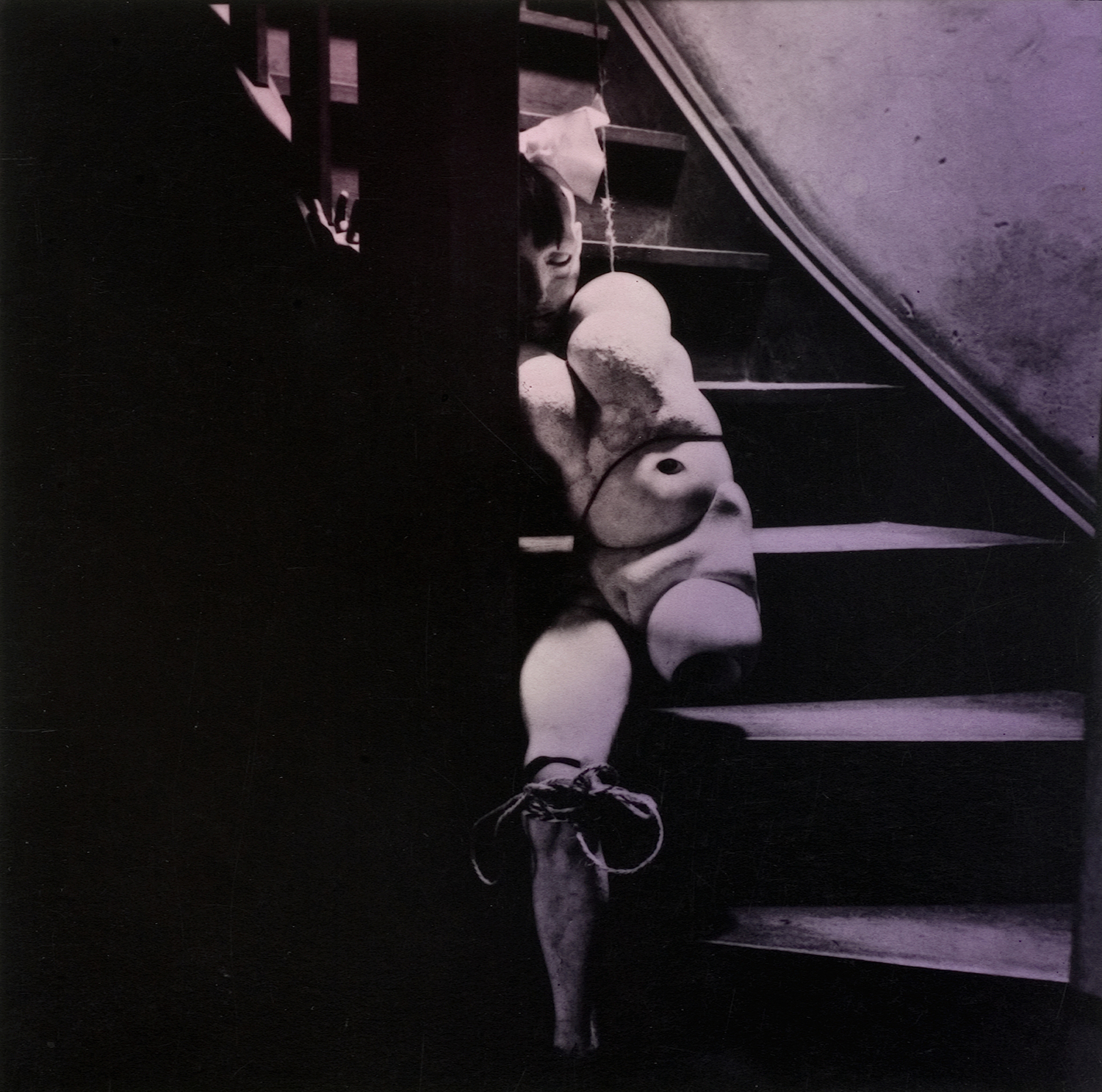
Nina Canell
BRIEF SYLLABLES (CONTAGIOUS), 2014
In Nina Canell’s sculpture Brief Syllable (Contagious) we find a severed communication cable cast into a cube of acrylic. In its current state, the cable manifests an abrupt disruption of time, an immaterial fluidity that has been encapsulated for future generations to look at. And despite the fixed form of the sculpture, it is also a manifestation of a phenomenon that is hard to comprehend. With equal parts subtle poetry and natural science, Canell illuminates the forces that surround us but often go physically undetected. Energies such as electricity, light and magnetism are recurring features of her art, as are everyday materials transposed into new contexts and combinations.
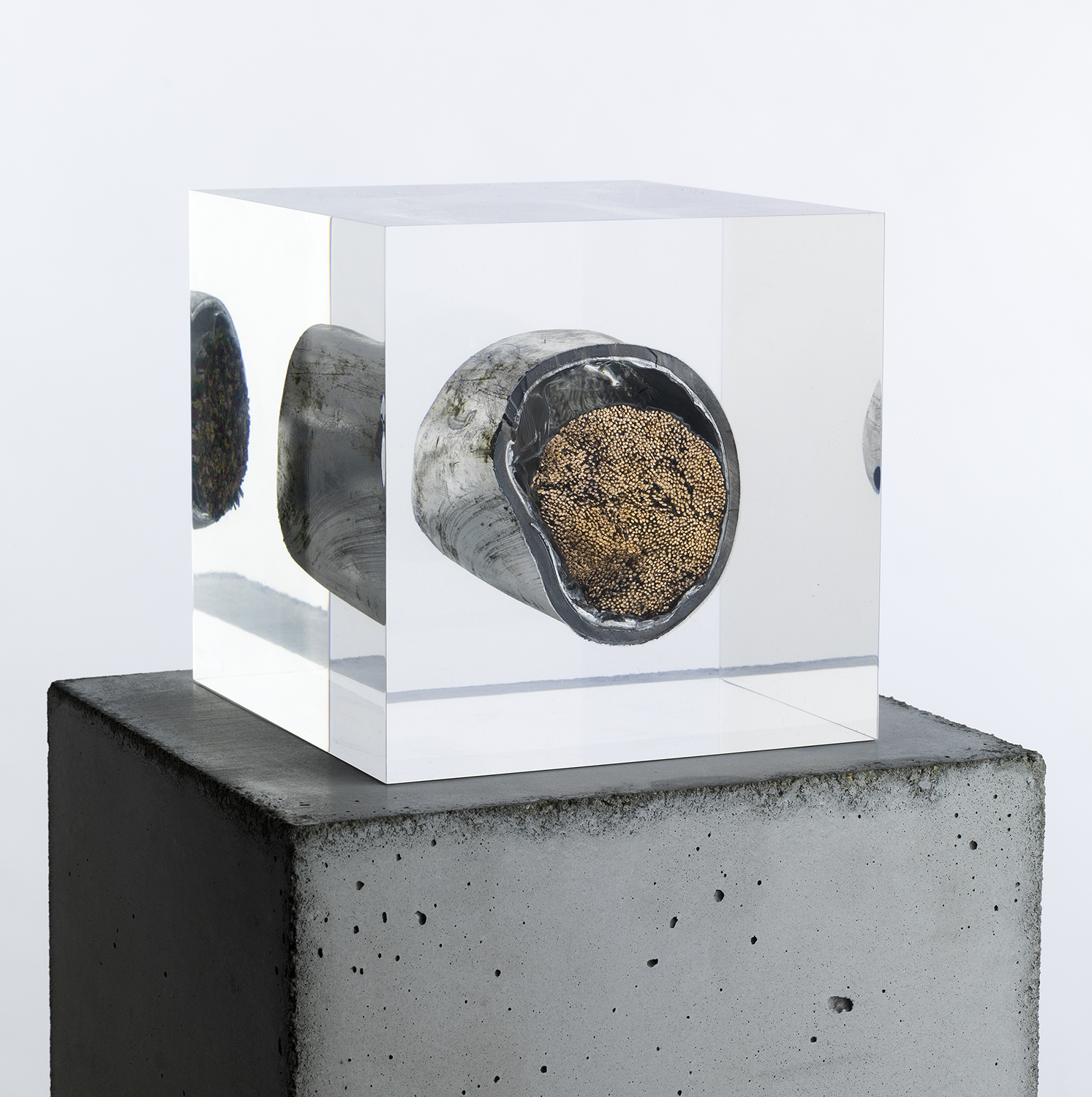
Lygia Clark
BICHO CARANGUEJO, 1959/1984
Lygia Clark was always trying to find new relationships between art objects and their viewers. Her searching eventually led to a performance-based practice conducting imaginative explorations of our sensory impressions. Bicho means animal in Portuguese. We’re meant to try to tame the animal by reconfiguring its composition, or restructuring the form proposed by the artist. Here at Moderna Museet Malmö, however, the work must be stored in a display case. The animal is caged, and the viewer is prevented from touching it. Thus the piece also poses questions about how participatory art can be put on display when it also has to be stored for the foreseeable future as part of a collection.
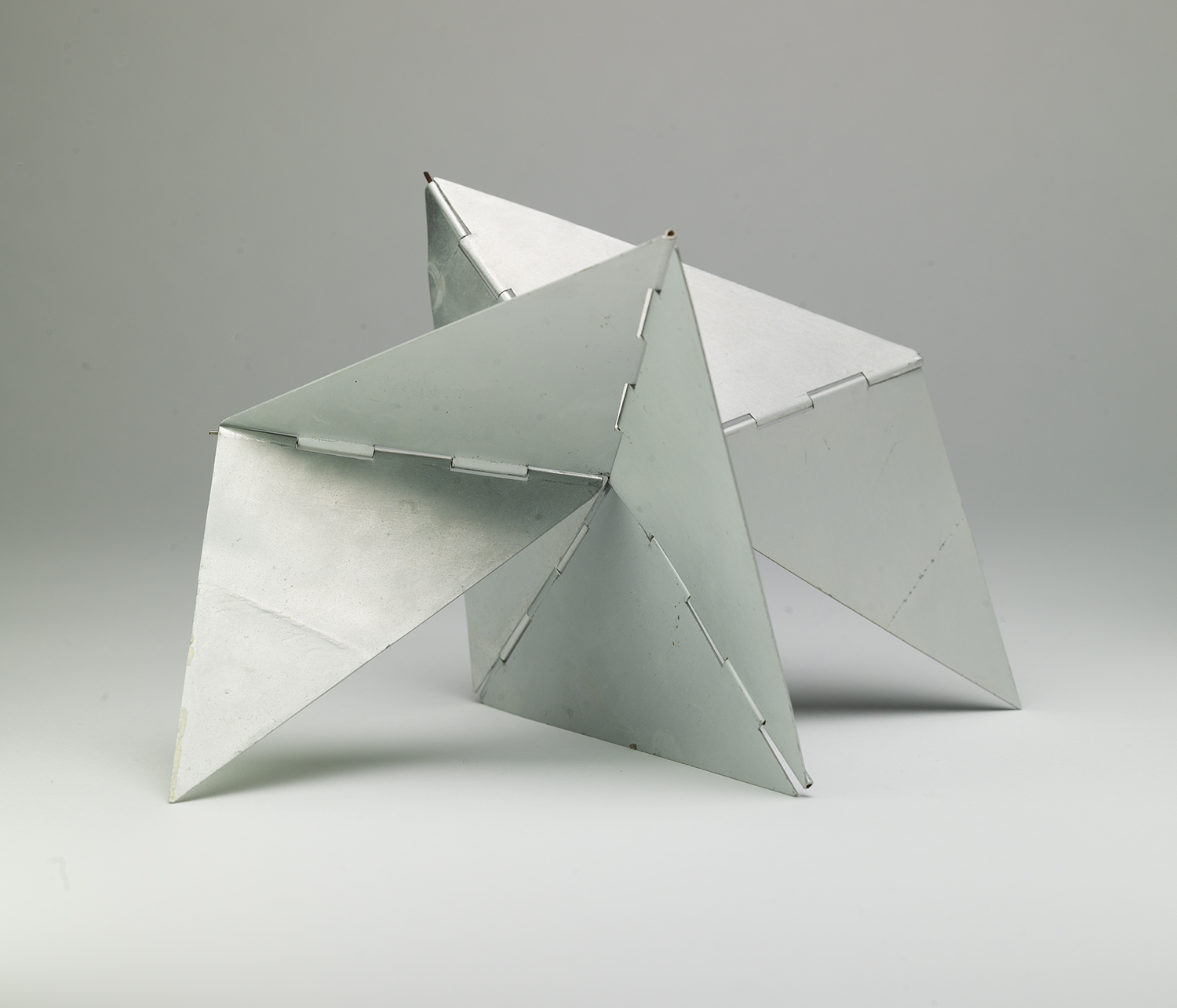
Keren Cytter
Untitled, 2009
The people we meet in Keren Cytter’s films are involved in complicated relationships. Passion and violence lurk under the surface of the everyday settings in which the action takes place. Cytter derives inspiration and material from her own experience and from films, novels and plays by John Cassavetes, Pier Paolo Pasolini, Samuel Beckett, and others. She employs a non- linear narrative form in which scenes are repeated like refrains. In Untitled, the actors play actors who are acting out their intricate connections during rehearsals for a play. The actors occasionally switch roles, read their stage directions aloud or reveal what is going to happen later on in the story. Keren Cytter’s tragic heroes and heroines seem to be the prisoners of their fates and the roles they play.
Please note, the work is on view on the Loading Dock 10.5 – 29.5 & 2.8 – 28.8 2022
Cecilia Edefalk
ANOTHER MOVEMENT, 1990-1999
Cecilia Edefalk often creates her paintings in series – frequently basing them on photographs and repeating the same motif until the distinction between original and copy is blurred. Edefalk herself has described the series Another Movement as seven paintings in various sizes and where, in each painting, she returned to the original – a photography from a women’s magazine, which she modified to emphasise the element she felt gave the photo its tension. An ordinary commercial photography of a man rubbing sun lotion onto the back of a woman is the starting point for the paintings. The stiff, square figures stand out clearly against the intensely blue, uniform background. In a strange way, the figures seem to hover between sculptural volume and flat surface.
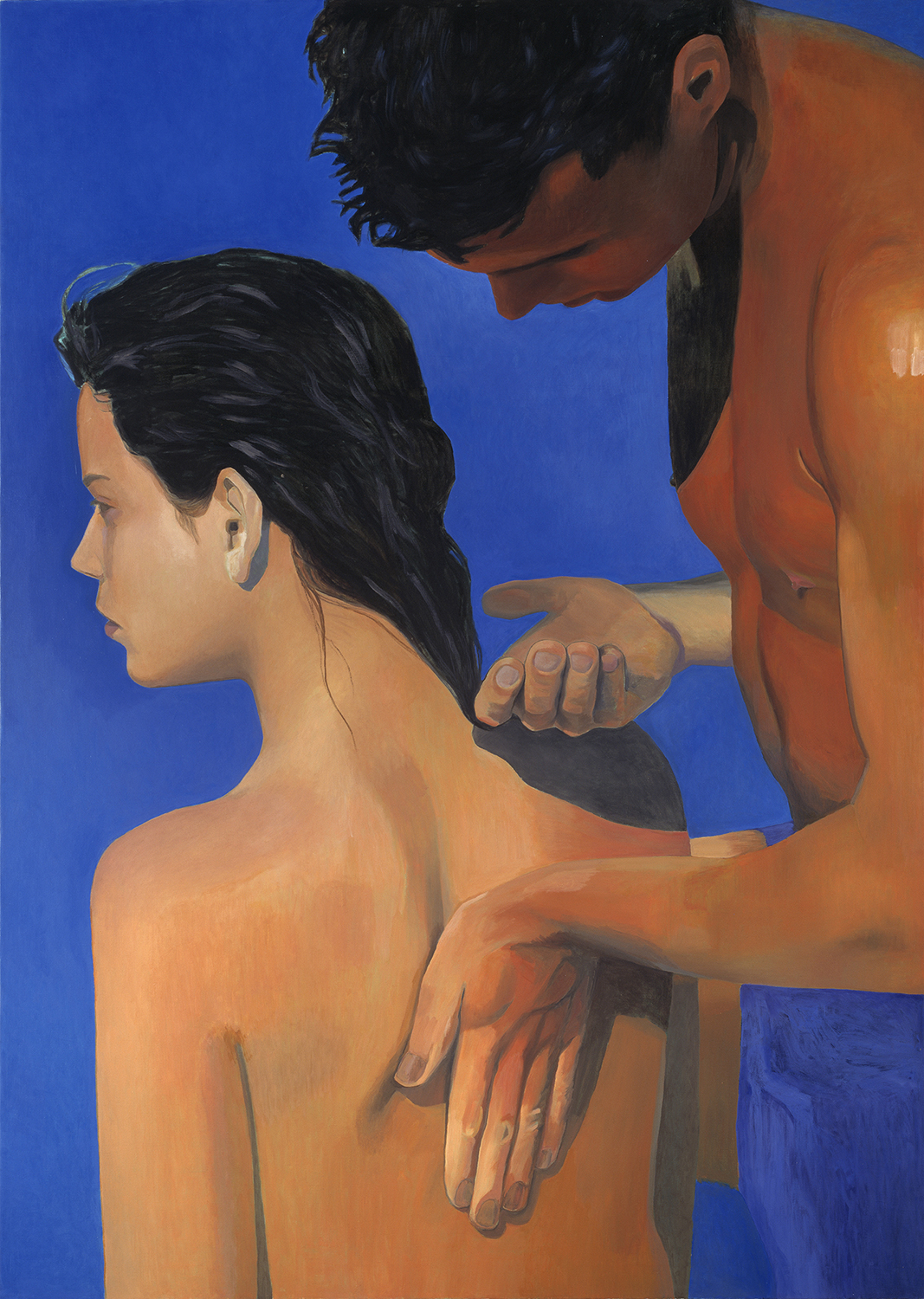
Roger Fenton
THE VALLEY OF THE SHADOW OF DEATH, 1855
During the “golden age” of photography in the 1850s, Roger Fenton was one of the most influential photographers in England. His work was wide-ranging, but he was noted primarily for his photographs of architecture and landscapes. He took the photograph The Valley of the Shadow of Death while working as a war correspondent for a British publisher documenting the Crimean War (1853–1856), a conflict between Russia and the allied forces of Great Britain, France, the Kingdom of Sardinia and the Ottoman Empire. Never before had war been documented through photography, and the pictures led to Fenton’s breakthrough with a broader audience. Despite its horrific context, the work expresses a kind of beautiful, poetic calm.
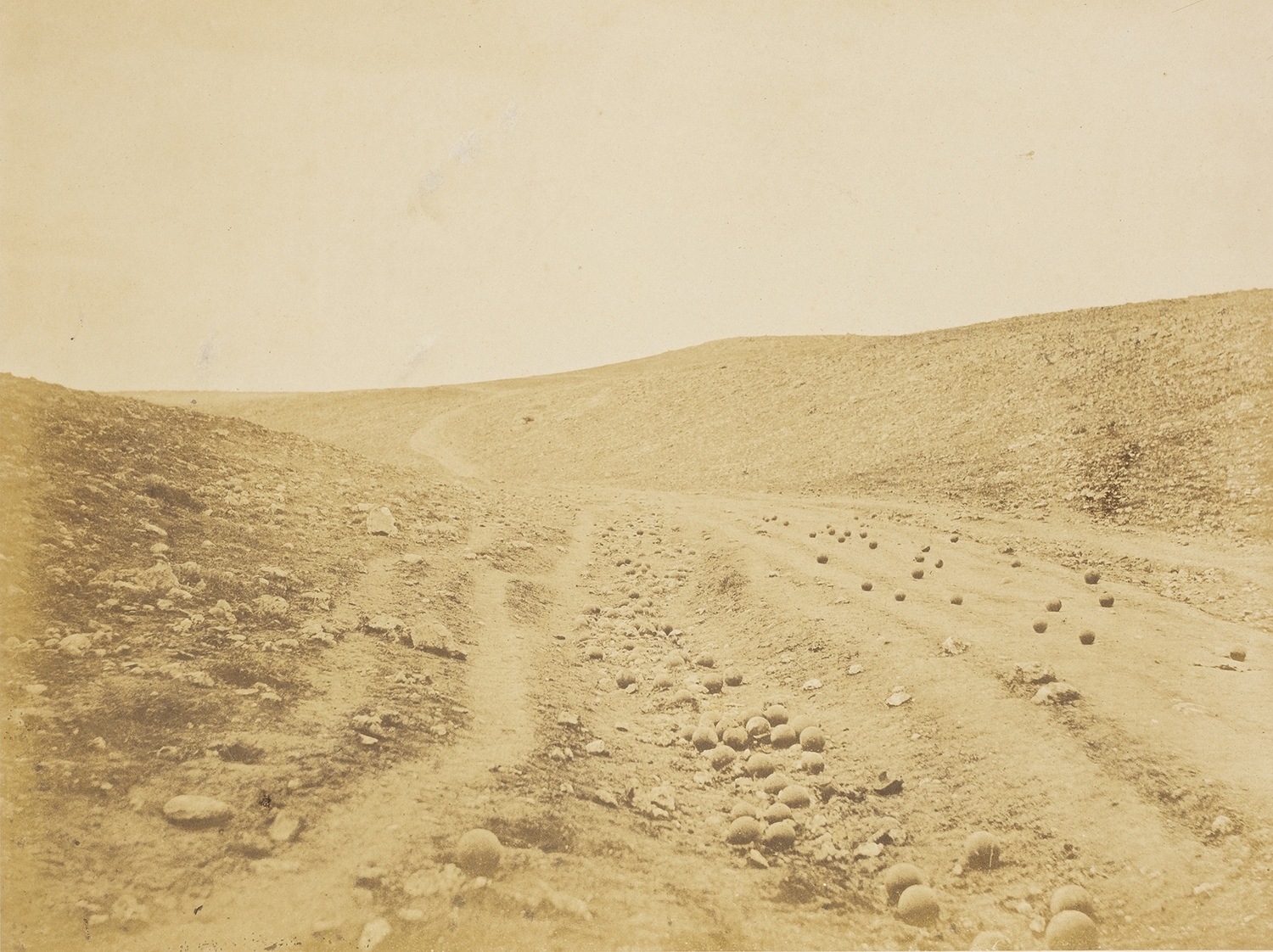
Simone Forti
SOLO NO.1, 1974
Simone Forti examines the relationships between bodies and objects, and she regards dance as a physical object. She studied under both Martha Graham and Merce Cunningham, but eventually turned against their strict demands for a ballet-trained body. Instead, Forti strove for a balance between total control and free expression. In her Solo No. 1, we see the artist moving round and round in circles. Periodically she curls up in movements found in the animal kingdom, and the work is often interpreted as a metaphor for development and ageing. Solo No. 1 was performed specifically for video, which creates a peculiar relationship between the dancer and the camera and at the same time makes it possible to distribute a dance performance through immaterial circulation.
Axel Fridell
AXEL FRIDELL, VISION DURING ILLNESS, 1933
Axel Fridell is considered one of Sweden’s foremost graphic artists in spite of his short life. He died of lung cancer in 1935 at the age of only forty. The drawing Vision During Illness was made in 1933, the same year Fridell travelled to London on what would be his last journey abroad. In this dreamlike work, we see a man walking toward us while some kind of demonic character rises up behind him. The man appears to be as yet unaware of the approaching danger. Could it be that Fridell created the work at the onset of his own illness, the demon representing the disease sneaking up on him and the emotions he was feeling? If so, perhaps this state of mind has been kept alive through the work’s inclusion in a museum collection.
Gideonsson/Londré
TANNED HEAD, PICKLED FEET, 2020
Tanned Head, Pickled Feet is composed of five brass containers containing traces of various liquids that are used in conservation. The point of departure is Gideonsson/Londré’s study of a conservation diary that chronicles the process of preserving the Tollund Man, a body more than two thousand years old that was discovered in a bog in Denmark in 1950. When the body was found it was essentially intact, but it began to decompose as soon as it was removed from the bog. The challenge was to try to recreate the preserving composition of the bog in order to bring the body into the eternal context of a museum. Methods utilised by Gideonsson/Londré to revisit this rupture in time between the living and the dead.
ACCRETION, 2021
In a close collaboration with Moderna Museet’s conservators, Gideonsson/Londré have followed the process of preparing the works of art on view here for the exhibition. Among other things, they have taken an interest in how an artwork is lodged in the body through conservation practice, which makes possible other forms of storage and transfer, and through which preservation becomes a continuously on-going process. In addition to drawings, which are composed of information obtained from the conservators’ physical sensations, the work includes a three-part performance given on specific occasions during which Gideonsson/Londré sequentially explore the conservators’ practice as a collective body. Visit Moderna Museet Malmö’s website for more information and viewing hours.
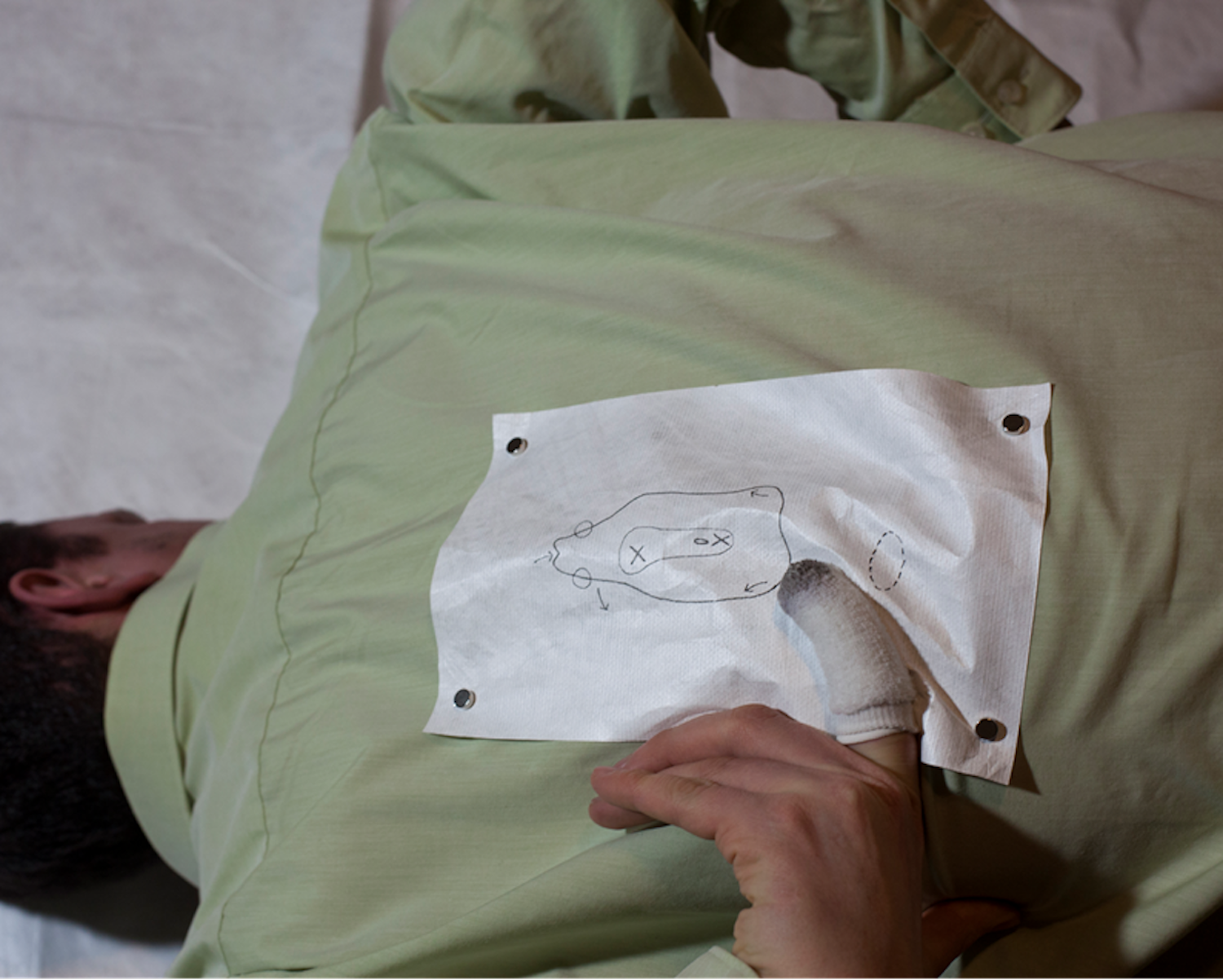
Hans Hammarskiöld
REST II, 1994
In Hans Hammarskiöld’s photograph, we see two draped and covered sculptures. What appears at first glance to be an artistic expression along the lines of the draping found in Baroque-era sculptures is in fact a measure taken out of necessity. During an earthquake in Santiago de Chile, the sculptures in the Chilean national museum were covered over to protect them from being damaged by parts of the building falling down over them. With his camera, Hammarskiöld immortalised the repose afforded the objects by these protective measures.
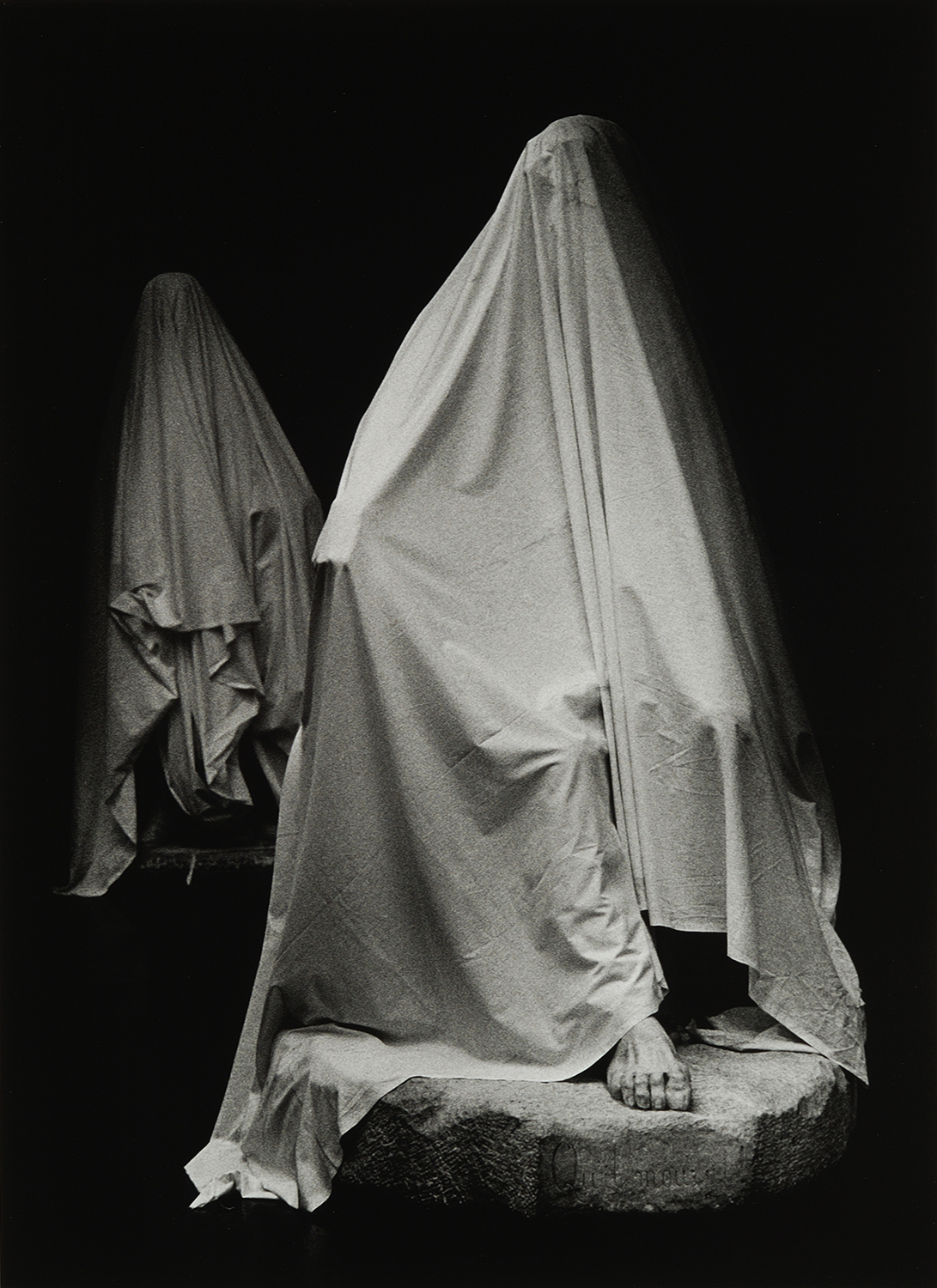
Susan Hefuna
STRUCTURE; RED BUILDING, 2009
Of all the techniques and materials used by Susan Hefuna, she considers drawing the most direct medium, as it involves the body and the hand tangibly, physically. Often, as in the example on view here, her drawings materialise imaginary buildings and urban landscapes. Hefuna has described them as mental or utopian architecture. The artist prepares herself by wandering through whatever city she happens to be in at the moment – the feeling and atmosphere generated by the place are more important than the actual buildings. And the drawings are deliberately not built up of straight lines, but rather take the form of fragile structures plucked from memory.
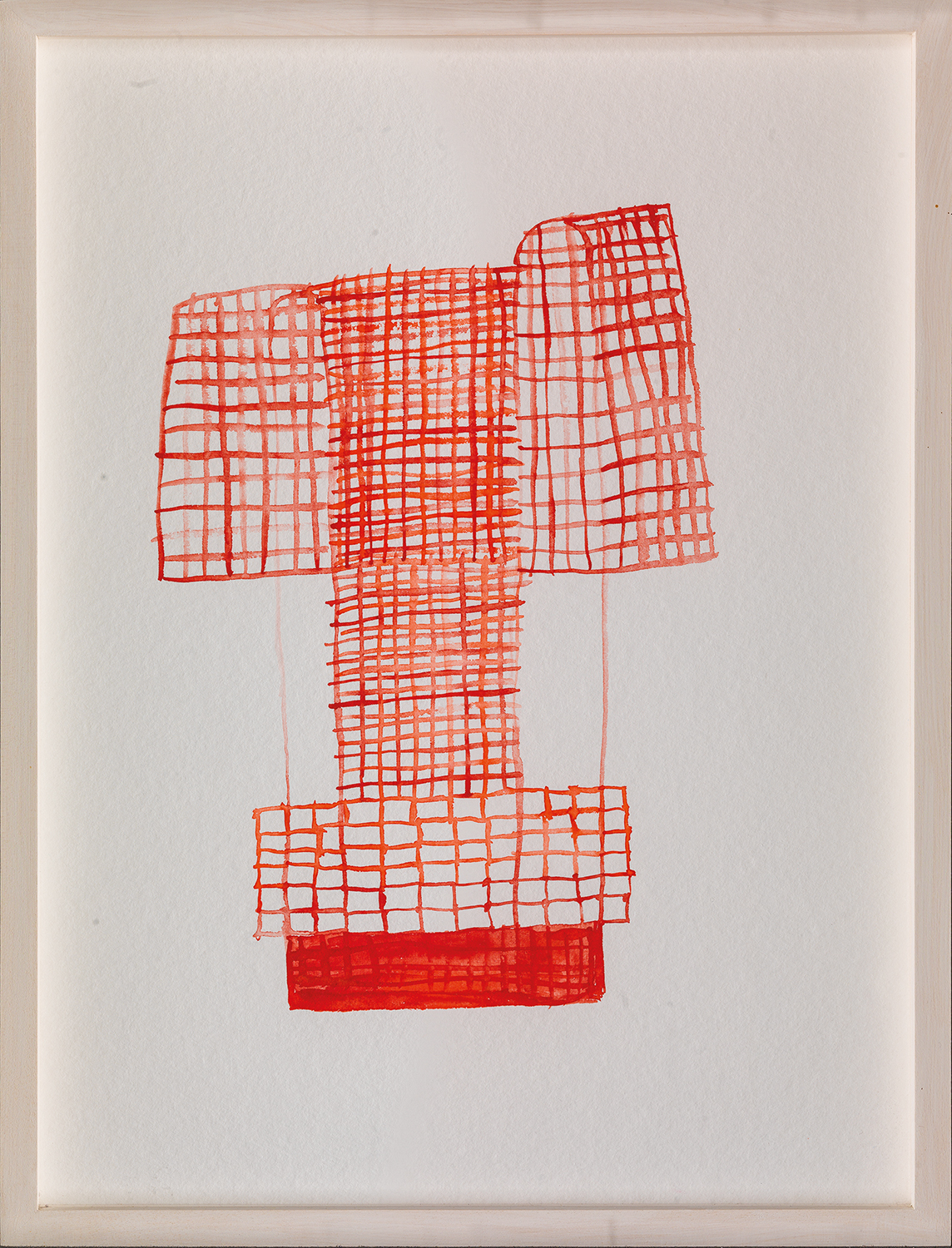
Susan Hiller
TEN MONTHS, 1977–1979
Ten Months is a key work in Susan Hiller’s body of work. It consists of ten blocks, each with image and text presented in the form of a step from left to right, top to bottom. Each framed image contains a grid of 28 small photographs, which represent a one-month document of the artist’s growing belly during pregnancy. A box for each day, a “block” for each month. The texts that accompany the pictures are extracts from the artist’s journal. The sharp, aphoristic reflections about a woman’s position in society contradict the romanticized image of the body as a landscape and Hiller takes on a double role as both subject and object, in a work that uses life as a material.
Rebecca Horn
OYSTER PIANO, around 1995
The work Oyster Piano is an example of the freestanding kinetic objects that have become one of Rebecca Horn’s recurring artistic expressions. The oyster shells are attached to the ends of metal rods like the strings of a piano. In each shell, a metal ball has been placed. When the rods move, the shells give off a ringing sound. However, the focus lies not on the machine itself, but on the movements that make the object appear to be alive. Horn composes various types of movements and rhythms and at the same time lets the objects relate to each other as well as to the observer. In the work, a finely tuned encounter arises between technology and nature, between machine and body.
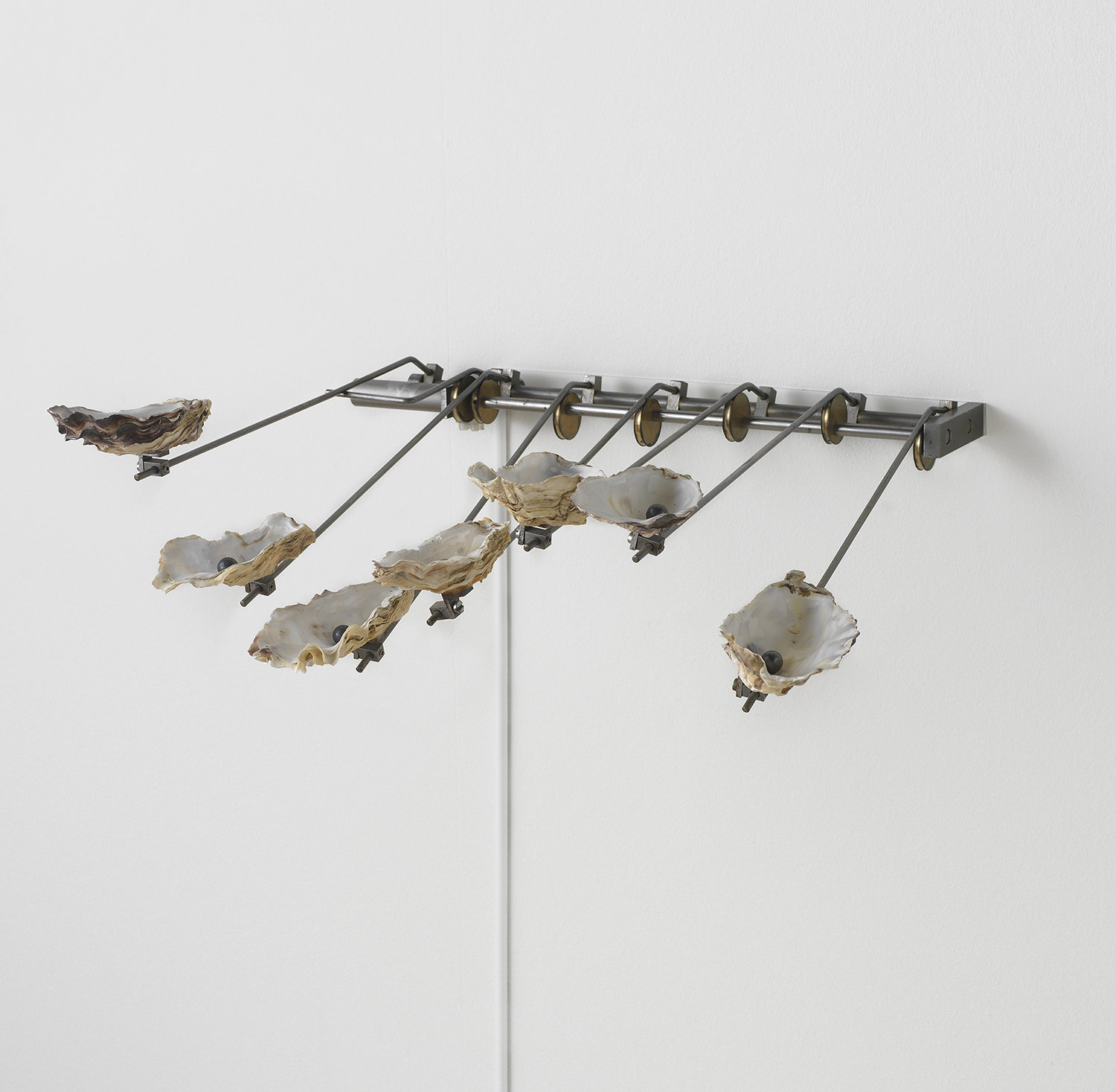
Åke Karlung
DRESS REHEARSAL FOR SUICIDE, 1964
It is hard to summarise Åke Karlung’s video work Dress Rehearsal for Suicide, and equally hard to say how viewers hould approach it. Karlung himself called it an avant-garde satire. We need to accept a certain amount of disorientation in confronting the film’s surrealistic editing of experiments and phrasing. The words “Tickled to death by art” appear on the screen, referring to an ancient method of torture that is said to have been able to cause an aneurysm, though not through the instrument of art. Perhaps we should understand the phrase as an insight into the artist’s method, or what has to happen for him to create: the eradication of the self in favour of the work. In his career as an artist, which united art with technology and included media such as film, sound and installation, Karlung underscored the importance of uncompromising experimentation.
Lee Lozano
PUNCH, PEEK&FEEL, 1967–1970
Throughout the 1960s, Lee Lozano was a prominent figure on the male-dominated New York art scene, passing through several artistic phases in rapid succession. By the mid-1960s, she was making her monumental anthropomorphic tool paintings, which eventually were abstracted into monochrome and minimalist hardness. Just before she gave up painting entirely, she processed a few of her minimalist paintings by perforating the canvases, as in Punch, Peek & Feel. The perforations, made according to exact sketches based on mathematical computations poked a hole in the illusion of volume and space that she had previously conjured up with her meticulous painting. The holes open up the view to the reality behind the illusion of the canvas: the stretcher and the wall.
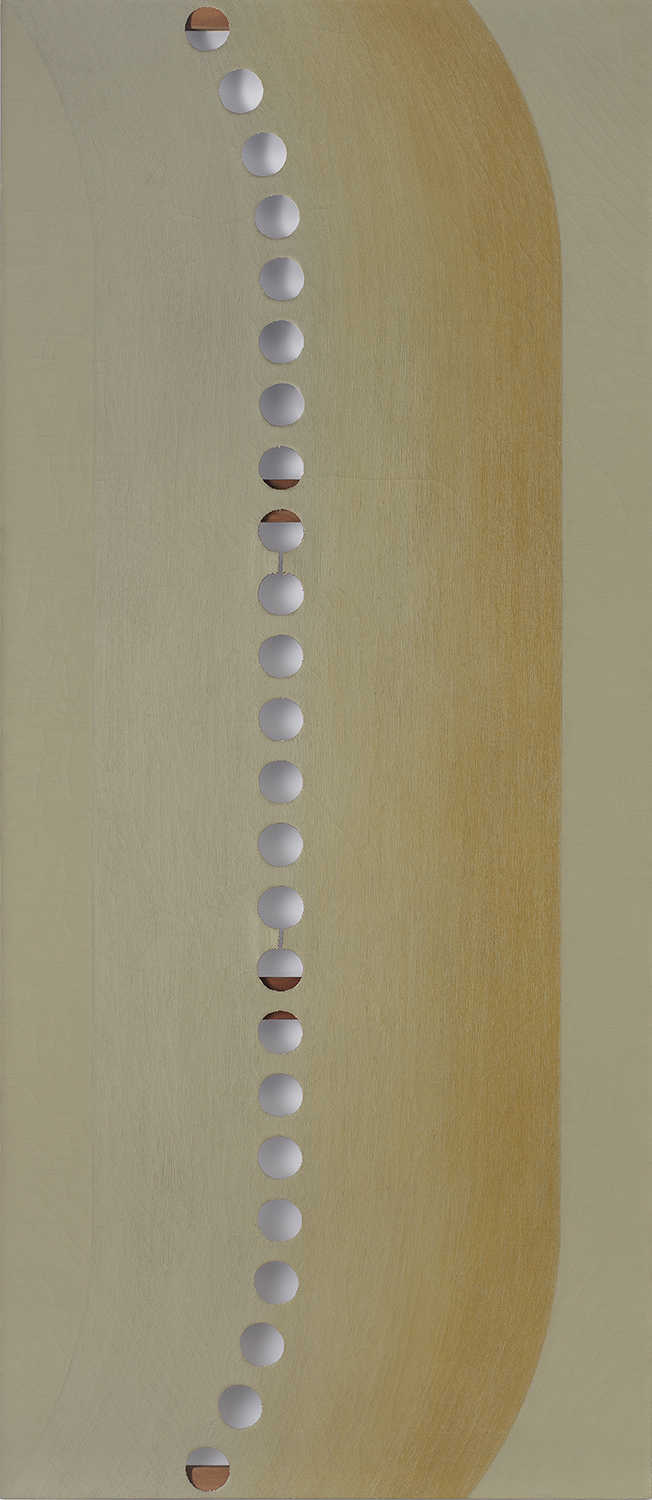
René Magritte
THE RED MODEL, 1935
In the painting The Red Model (which exists in three versions painted in oil), a pair of lace-up shoes transforms seamlessly into a pair of human feet. Or perhaps it is the reverse, as two simultaneously distinct and yet associated objects merge into one. In this case, one is considered alive, the other dead. The motif and the title together play on the observer’s powers of perception and reading, and they open reality up to another dimension. The painting’s realistic style only heightens the unstable relationship between what is actually shown and what observers believe they are seeing. René Magritte’s career included working among the Surrealists in Paris in the late 1920s, and his work shows how consciousness can be manipulated with apparently simple means – often with a dose of both irony and absurd humour.
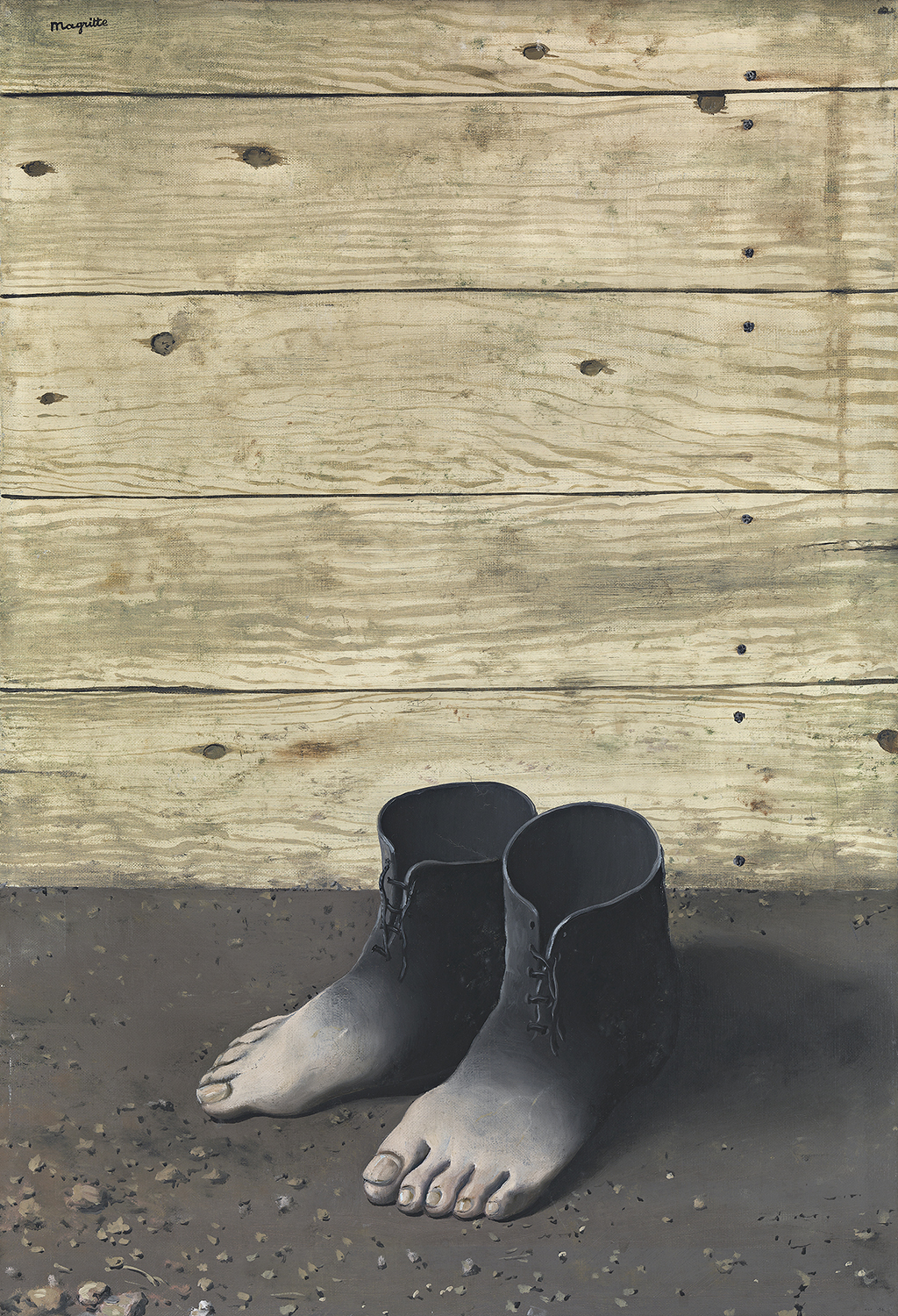
Mark Manders
ROOM, CONSTRUCTED TO PROVIDE PERSISTENT ABSCENCE, 2001–2002
There is a melancholy and slightly creepy aura about Mark Manders’s installation Room, Constructed to Provide Persistent Absence. As the title suggests, the artist’s ambition has been to create a space in which the observer can never really feel present. Manders has said that the room’s occupant (the artist himself?) is held captive in the various elements and set free only when an observer looks them over. There is an interesting duplicity in Manders’s work in which each component part oscillates between the factual and the incomprehensible – just look at the body-like form lying on one of the beds. A world all its own is created in which, in spite of the melancholy atmosphere, everything seems possible.
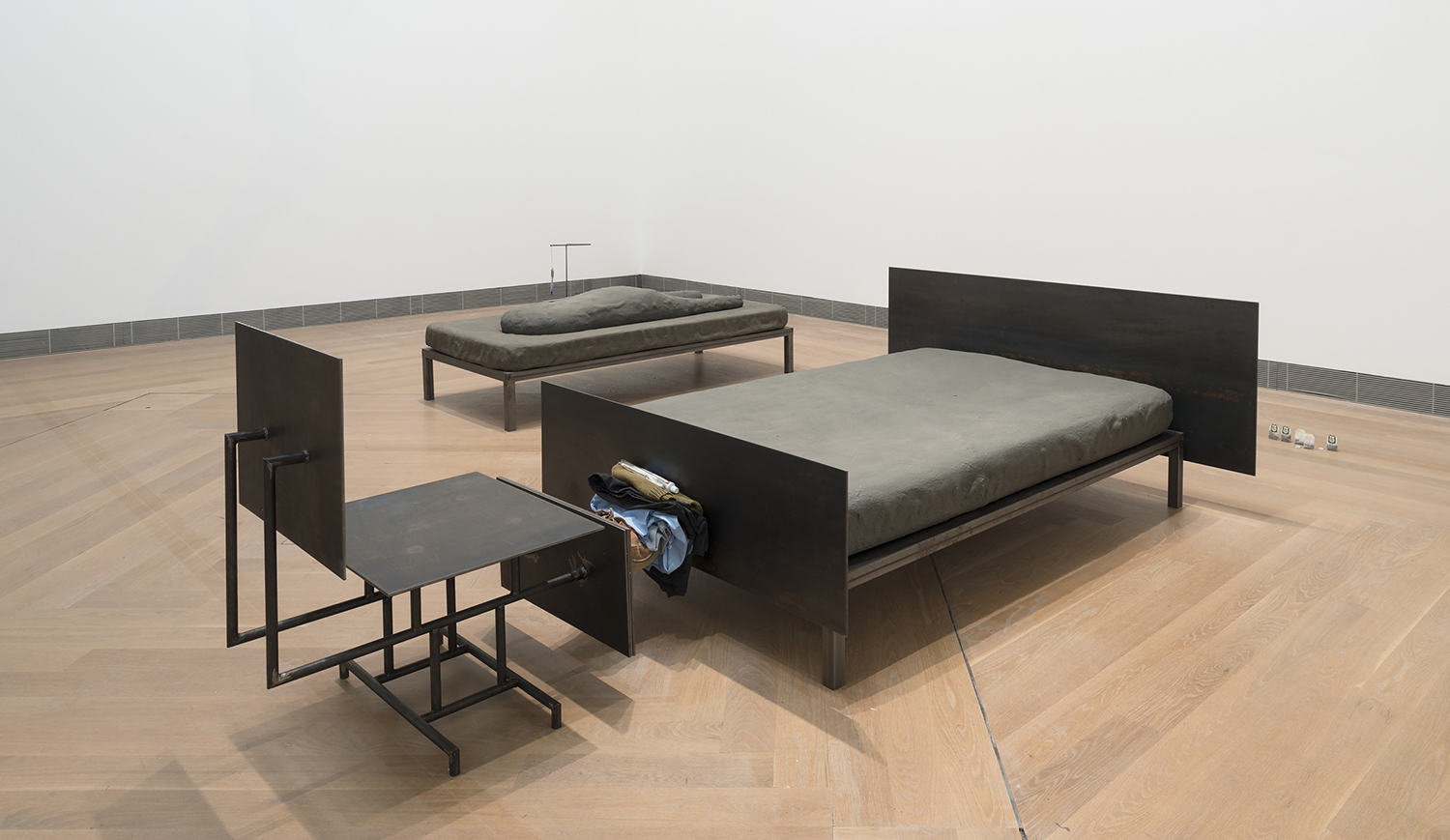
Katja Novitskova
APPROXIMATION (pinocchio blizzard), 2014
Katja Novitskova creates works focusing on evolutionary processes. As in this work, where the Pinocchio lizard appears on the art scene. The artist explores the role of media in society, and how it influences our world view on everything from culture to nature. In her art, Novitskova uses found images, creating new contexts for them in installations where technology and scientific issues are highlighted in the anthropocene era, the time on earth when the environment is significantly impacted by humans. In the “Approximation” series, Novitskova uses animal pictures that she has found on the internet to make digital prints on aluminium. The Pinocchio lizard, believed to be extinct, was discovered along a motorway in Ecuador in 2007.
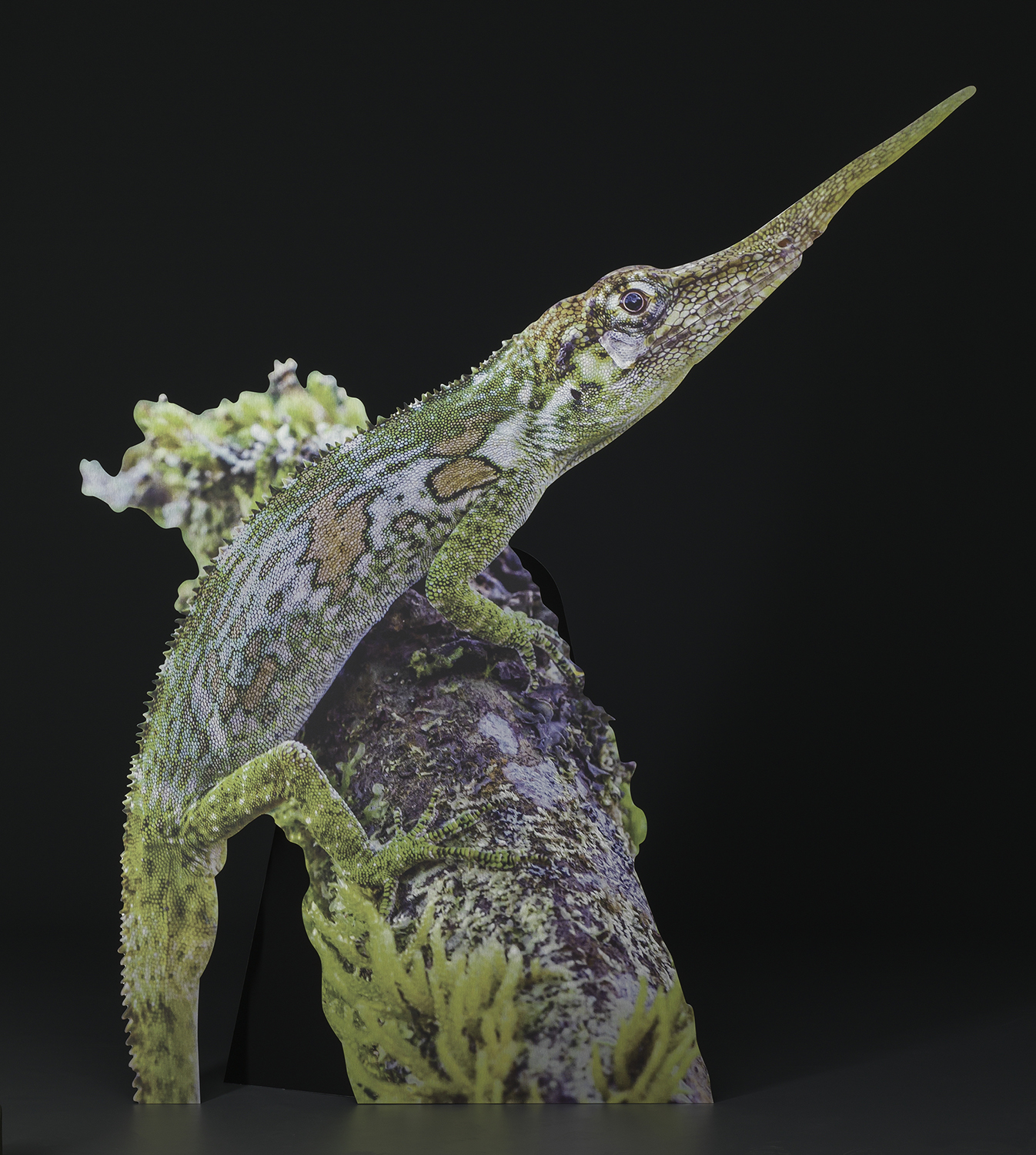
Claes Oldenburg
MODEL (GHOST) MEDICINE CABINET, 1966
In 1962, Claes Oldenburg’s first “soft sculpture” was made, created in fabric, and together with his then wife, Patty Mucha. In the ensuing years, the couple collaborated to make bathtubs, toilets, enlarged light switches, and electric mixers in the form of soft sculptures; separated from their original purposes and influenced by gravity, they appear to be in a state between shape and shapelessness. The soft sculptures were often made in multiple varieties, as sewn objects in brightly coloured, shiny vinyl, enlarged, or – as in the case of Model (Ghost) Medicine Cabinet – as white-painted canvas “ghost versions”. These were initially created as studies, but have later come to be regarded as independent works of art.
Klaus Rinke
MEMORY OF THE SKIN, 1987
In the work Memory of the Skin, Klaus Rinke has captured a repetitive form with his pencil – a pattern of semi-circles that move more or less randomly over the paper. The title of the work leads to thoughts of something close to the skin, naked, the feeling of skin on skin. In addition, the presentation in the exhibition makes the most of the work’s materiality by showing it from both the front and the rear. Since the 1960s, Rinke has been an important figure in the European art scene, and in addition to drawing he works with painting, photography, sculpture and performance art.
Lenke Rothman
FACE BURNED IN FABRIC, 1976
In Lenke Rothman’s Face Burned in Fabric, a diffuse visage emerges from the fabric. Rothman was interested in the essence of the material. She was a survivor of the concentration camps at Auschwitz and Bergen-Belsen, and thoughts about sorrow, life and death seem to be ever-present in her work. It is marked by pain and suffering that is expressed both subtly and explicitly. The artist clarifies how a simply worked fabric can hold a multitude of diverse memories, feelings and thoughts simultaneously. In the smaller pieces something larger is revealed, and the material is allowed to live a life of its own. Rothman has described it in the following way: “Our lives are cut, stitched, and rearranged as if they were cloth.”
Wolfgang Tillmans
FREE SWIMMER 180, 2011
Wolfgang Tillmans’s photographic motifs vary from personal portraits to abstract polychromes, from arranged still lifes of everyday items to imaginative astronomical phenomena. Freischwimmer 180 is a thoroughly abstract image that allows viewers to open their minds to non-narrative interpretations. In his “Freischwimmer” (Free Swimmer) series, Tillmans literally captures the light, and thus the essence of photography, by illuminating a piece of light-sensitive paper in the darkroom. The immaterial light is transformed into something physical that suggests a coloured liquid frozen in an exercise in contemplation. This series of works brings to light time and feelings, something almost seductive, in a way that is hard to name. The resulting image is fluid both in its subject and in the associations to which its random and unique composition inexplicably lead the viewer’s thoughts.
